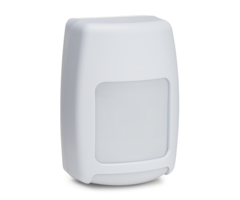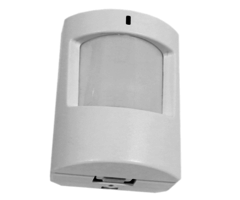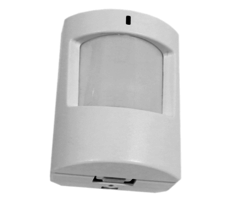Why Do Insects and Small Animals Set Off PIR Motion Detectors?
Insects and small animals set off PIR motion detectors because they emit the infrared (IR) energy needed to activate the devices. If an insect or small animal gets close enough to the sensor, then they will be able to activate it. Some motions have bug guards to prevent this from happening.

PIR motion sensors work by looking for the changes in IR energy that occur with movement. Every person, animal, and object gives off varying amounts of IR energy. When a person, animal, or object comes within the field of view (FoV) for a motion sensor, the device will detect the change in IR energy and alert the system. Normally, an insect or small rodent moving past a motion would not be enough to activate it. But if the creature gets close enough to the sensor, then the change in IR energy might be just enough to trigger it.
The best way to prevent an insect or rodent from setting off motion sensors is to install these devices in locations that are difficult for pests to access. For example, if you have a warehouse with support beams, then you might want to avoid mounting a motion next to a beam that a mouse or rat could crawl across. The motion sensor probably wouldn't detect a mouse running across the floor, but it will detect a mouse that is directly in front of it.
Another option is to choose a lower sensitivity level for the motion sensor. A motion sensor set to a lower sensitivity level should still be able to detect a human intruder. But this will make it less likely to respond to an unwanted pest. You should make sure to walk test the motion sensor after changing its location or adjusting its sensitivity level to make sure that the device still responds the way you want it to. Remember to place your system on test mode with the central station before testing.
Bugs and insects are very small, and they will most likely only set off a motion sensor if they crawl directly upon the lens. However, this can be a legitimate concern for some users, as bugs and insects can be attracted to the warmth that is emitted from a motion sensor. This is something that can happen during colder weather. That is why some motion sensors feature bug guards to keep out these pests. A good bug guard will provide zero clearance and stop any insects from entering the inner workings of the sensor. An example of a motion that features a bug guard is the 5800PIR-COM.
Additionally, if you are using hardwired motion sensors, make sure that the wires are tucked away in an area that cannot be reached by a small mouse or rat. Otherwise, the rodent may chew on the wires and damage the connection. You might also consider switching to wireless motion sensors to prevent this from happening. Many DIY users find that wireless motion sensors are easier to use overall.
Did you find this answer useful?
We offer alarm monitoring as low as $10 / month
Click Here to Learn MoreRelated Products



Related Categories
- Answered


